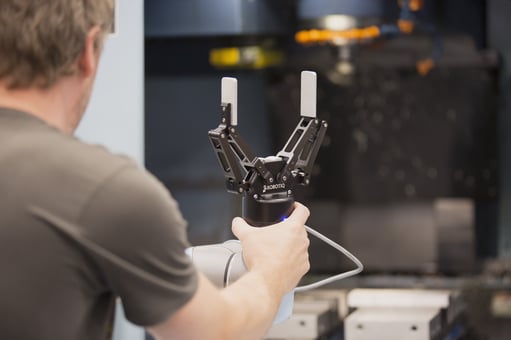All You Need to Know to Perform a Risk Assessment

Posted on Jun 06, 2016 7:00 AM. 2 min read time
When introducing a robot on a shop floor, there are many things to think about. The robot itself, the end-effector, the process, the sensors and how to automate all of this together. Most of the time the integration is done to perform a certain task and the safety aspect is often let aside. Since the actual robot process is taking a lot of time, we have solved a part of the safety aspect for you. In fact, we have built a complete ‘safety kit’ to give you all the resources to build and understand your own risk assessment for collaborative robots.
With the release of the new ISO/TS 15066 a couple of guidelines in collaborative robots have been changed. In fact, as these robots did not have any limiting force or speed value, this standard has established guidelines that can guide you in the design of a safe collaborative cell.
''But before limiting the force, you need to analyze the risk of an impact that could possibly occur.''
As you may not know, collaborative robots have been introduced in manufacturing plants without really knowing what was the maximum speed and force that they can apply to a human. With this new standard, we have precise force and pressure values that have to be set in the robot program to limit them and avoid hurting human. But before limiting the force, you need to analyze the risk of an impact that could possibly occur. This is why we have built a Risk Assessment explainer and template. This eBook will pass through a risk assessment methodology as per ISO 10218 or its equivalent.

Before going too far into the understanding of the standard, start by reading our eBook ‘ISO/TS 15066 Explained', which is pretty much a blueprint for your collaborative robot risk assessment.
Get the eBook now and also learn about how to do a risk assessment for your next collaborative robots.
Other articles on this subject:
What is a collaborative robot?
What does ISO/TS 15066 change?








Leave a comment